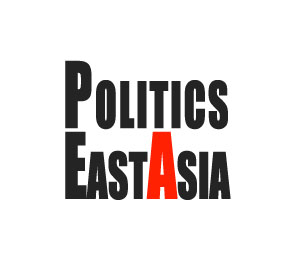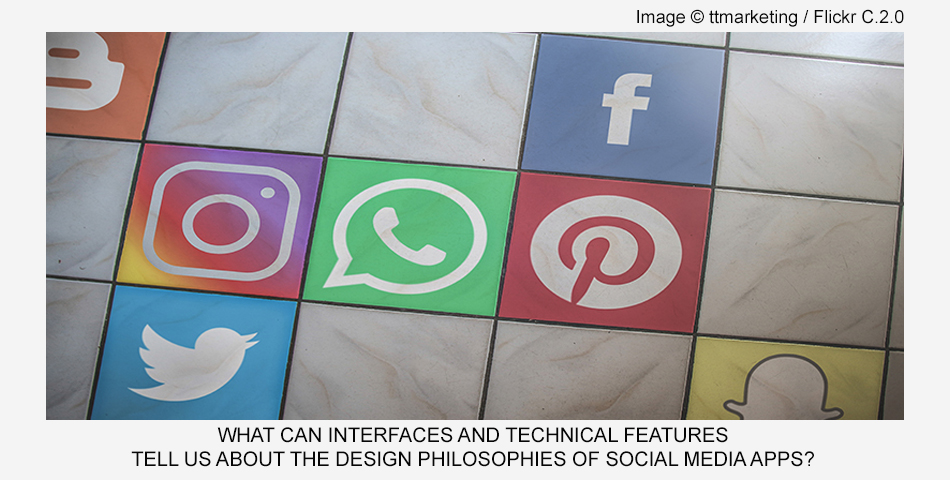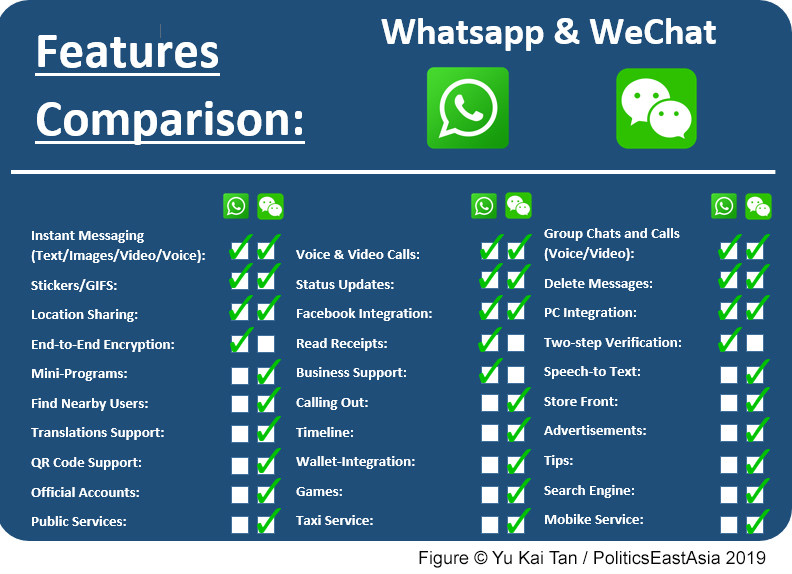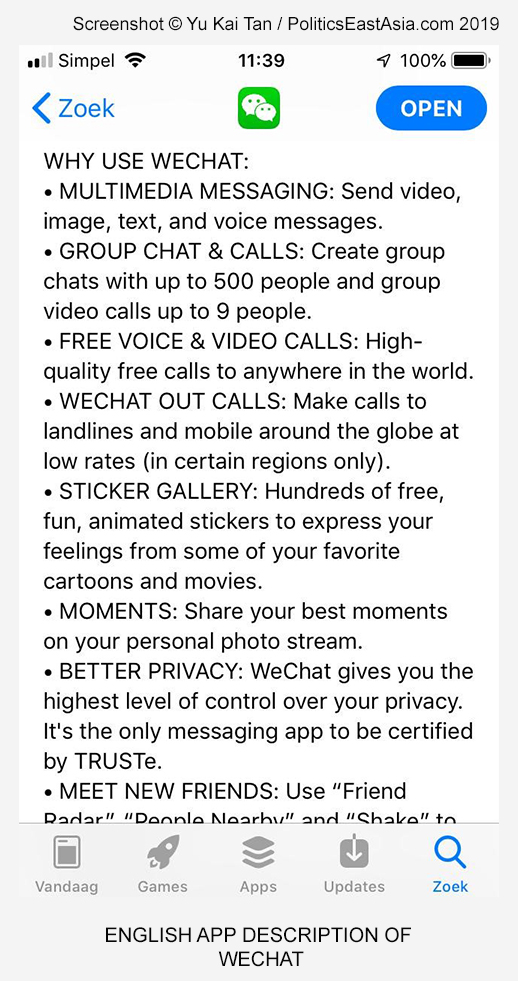Design Philosophies of Social Media
Comparing Features of Whatsapp and WeChat
Graduate research post by Yu Kai Tan
Social media has taken an increasingly prominent place in people’s daily lives. A recent study has concluded that Whatsapp users have spent 85.21 billion hours on the app globally, over a three-month period. That is a whopping 11.200 hours for every human on earth (calculated using the conservative number of 7.6 billion as the world population). WeChat usage could very well be even more than that, keeping in mind that this study did not take Chinese third-party Android stores into consideration. Because of all this time spent on social media, it is important to understand how these apps operate, why certain features were introduced, and what exactly affected those decisions.
In my research paper, I will be compare and contrast the social media apps Whatsapp and WeChat, paying particular attention to their features and marketing in order to better understand their design philosophies. I have specifically chosen these two social media apps because they are quite similar in their core, as both apps are phone-based, instant messaging apps that are immensely popular in their respective home regions. However, over time, both apps have developed in very different ways, creating two very different social media apps. A prominent example of these differences is the wallet-integration recently added to WeChat, compared to the end-to-end encryption introduced in Whatsapp to increase the users’ privacy.
Although I have not yet completed my research, I will present here some of my preliminary findings. A small disclaimer, though: my preliminary research has mainly compared the features, therefore I am not drawing any conclusions with regards to the apps’ design philosophies at this point. Further research is required to make such a statement.
Differentiating Features
As mentioned above, Whatsapp and WeChat are quite similar in nature, as they are both phone-based instant messaging apps. However, since their launch both apps have introduced a great variety of different features that differentiate them from their competitors (and each other). I have compiled a list of features in the table below, showcasing what app has which features.
From this table, it is already apparent that WeChat has notably more features than Whatsapp. Furthermore, by looking at what features both apps have introduced, some trends are noticeable. Whatsapp’s features seem to be more focused on maintaining and improving the quality of its main service (instant messaging), making quality of life improvements as well as tightening security. WeChat, on the other hand, seems to focus more on expanding its services, for instance by adding a search engine feature or integrating various mini-programs (basically a mini app that doesn’t need to be downloaded or installed). These trends already suggest that the developers of these two apps have different outlooks on what they want their apps to be, and that they consequently subscribe to different design philosophies.
In order to better flesh out these trends in the final research paper, I am planning to add a timeline, showcasing when and in what sequence these features were introduced. This can reveal a lot about the reasoning behind adding these features.
Selling Points
Unfortunately, it is very hard to find, research, or prove any type of intent behind certain actions. However, the marketing reveals a lot about what features the developers of these apps value (or, at least, think their target audience would value). The descriptions of the apps in the Apple App Store are an important part of the marketing, as they try to sell the app to potential consumers. Therefore, I have also taken a look at these apps’ descriptions, to see if they support the trends discussed above. I accessed these descriptions on 6 January 2019 and, in the case of Whatsapp, translated the key terms from the Dutch version.
The Whatsapp description mentions the following selling points: “No Hidden Costs”, “Multimedia” (videos, photos, text and voice messages), “Whatsapp Calling” (a free calling service), “Group Chats”, “Whatsapp Web” (PC integration), “No International Costs”, “Say No to Passwords and Usernames”, “Always Online”, “Easy Access to Your Contacts” and “Offline Messages”. Finally, the description mentions some minor selling points, including: “Location Sharing”, “Contact Exchanges”, “Personalization Options”, “Chat Histories” and “Mailing Lists”.
WeChat’s description mentions the following selling points: “Multimedia Messaging”, “Group Chat & Calls”, “Free Voice & Video Calls”, “WeChat Out Calls” (a cheap alternative to calling), “Sticker Gallery”, “Moments” (a timeline feature), “Better Privacy”, “Meet New Friends”, “Real Time Location”, “Language Support” and “WeRun-WeChat” (a mini health program). It also mentions some additional minor selling points, these include: “Desktop App”, “Personalization Options” and “Official Accounts”.
Interestingly enough, the descriptions of these apps in the App Store do not fully reflect the actual features I listed in the table above. As expected, Whatsapp’s description mainly focused its selling points on the primary service. However, it fails to mention any security features and instead puts a lot of emphasis on it being free, mentioning the lack of costs in three separate selling points. Ironically, it is WeChat’s description that mentions “Better Privacy” as a selling point. It, however, fails to mention the majority of features that expand the company’s services. This final observation was surprising to me, especially considering how popular some of its additional services have become in China. However, that may be the exact reason why I cannot find those features in the description, as I am using a non-Chinese variant of the App Store. I suspect that WeChat’s description in the Chinese App Store does advertise these additional services more. Therefore, I am planning to add an analysis of WeChat’s description in the Chinese App Store to the final research paper.
That being said, the descriptions of the non-Chinese App Store already reveal that the developers of these apps are promoting their apps first and foremost as instant messaging apps. This is evident from the sheer number of selling points relating to the main service of instant messaging as well as their prominence in the lists (being the second, third, and fourth selling point in Whatsapp’s description, and the first, second, and third in WeChat’s).
Concluding Remarks
Although my research is still in a very early stage, I can already discern some clear differences between the two apps. Moreover, I managed to uncover the first traces of their respective design philosophies. The trends found in the features comparison suggest that Whatsapp’s developers focus on providing their main service in the most prominent way possible, whereas WeChat’s developers prioritize expanding their services. However, as a quick look into the marketing of these apps shows, this isn’t as clear-cut as one might expect. The descriptions in the Apple App Store seem to only partially support these trends, suggesting that there is still some nuance within the design philosophy that needs to be uncovered. Therefore, it is up to further research to determine how expansive these differences in design philosophy truly are and what the reasoning behind them might be.





